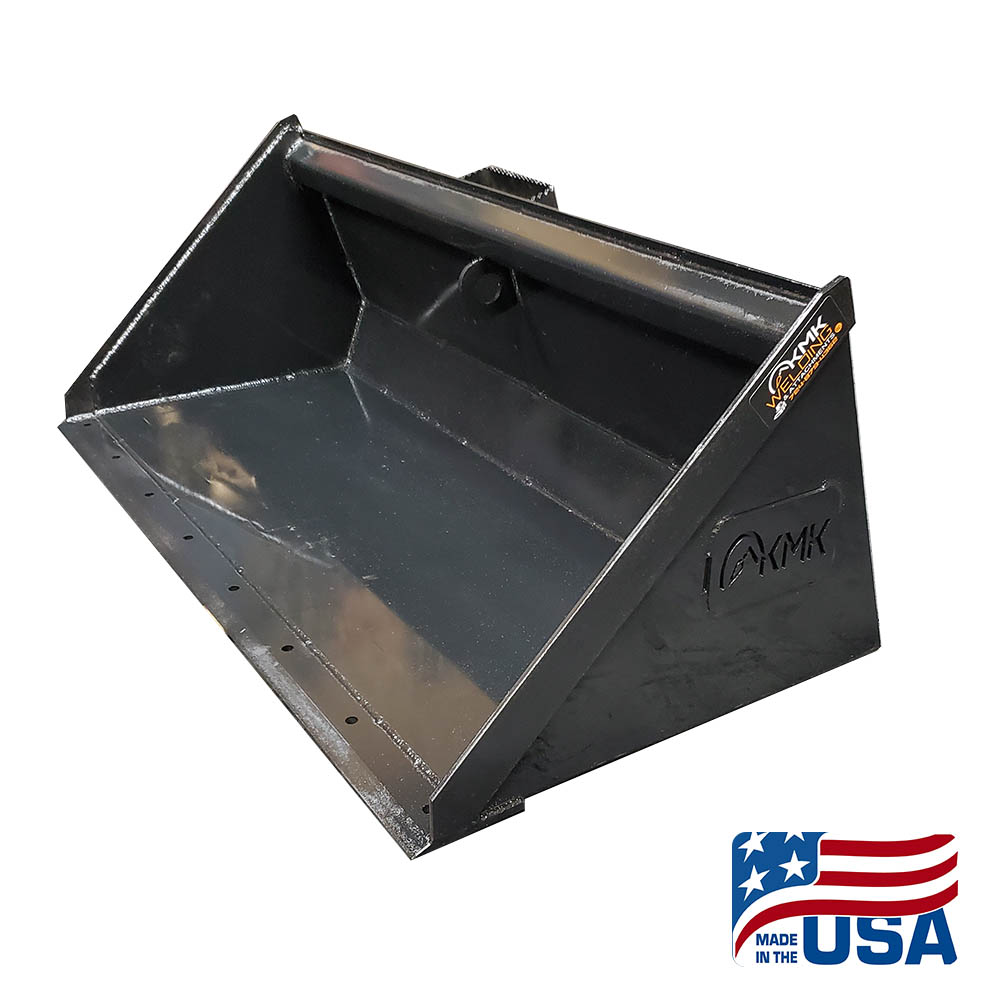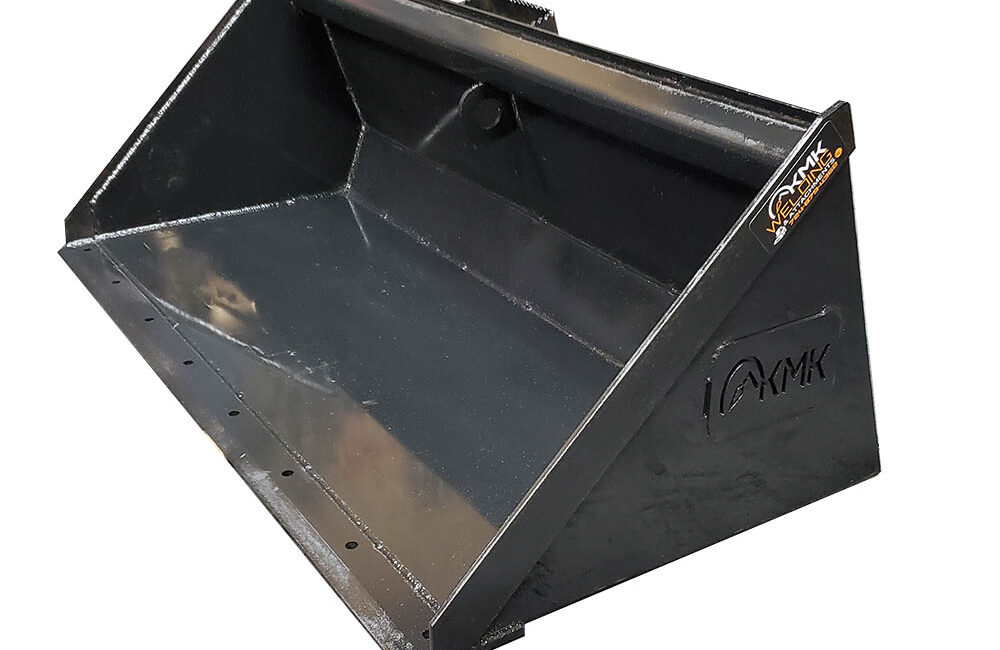Have you ever wondered if a skid steer bucket is the same as a yard? Well, you’ve come to the right place! In this article, we’ll explore the answer to the question “Is a skid steer bucket a yard?” and clear up any confusion you might have. So, let’s dive in and discover the truth together!
When it comes to construction and landscaping, skid steer buckets and yards are two terms that often get mixed up. But let me tell you, they are not the same thing at all! A skid steer bucket is a versatile attachment for a skid steer loader, used for various tasks like digging, scooping, and carrying materials. On the other hand, a yard is a unit of measurement used in construction to quantify materials like soil, gravel, or sand. So, while a skid steer bucket is a tool, a yard is a measurement.
Now that we’ve clarified that a skid steer bucket and a yard are not interchangeable, you might wonder why people get confused in the first place. Well, it could be because skid steer buckets often carry and distribute materials like soil, gravel, or sand, which are commonly measured in yards. But remember, the bucket itself is not equal to a yard; it’s just a tool used to transport or move materials that are measured in yards.
So, the next time you hear someone asking, “Is a skid steer bucket a yard?” you can confidently say that they are not the same thing. A skid steer bucket is a handy attachment, while a yard is a unit of measurement. Now that we’ve cleared up the confusion, let’s delve deeper into the world of skid steers and their buckets!

Is a Skid Steer Bucket a Yard?
Welcome to our in-depth article where we will explore the question, “Is a skid steer bucket a yard?” Skid steer buckets and yards are both important elements of construction and landscaping projects. In this article, we will dive into the functionality and uses of skid steer buckets and yards, and discuss if they can be interchangeable. Whether you’re a construction professional or simply curious about these heavy-duty tools, this article has the information you need.
Understanding Skid Steer Buckets
A skid steer bucket is a versatile attachment used with skid steer loaders. It is a bucket designed to handle various types of materials such as soil, sand, gravel, and debris. Skid steer loaders are compact, engine-powered machines that steer by using their skid-steering mechanism. Skid steer buckets are commonly used in construction, landscaping, agriculture, and other industries.
The design of skid steer buckets allows them to perform multiple tasks. They typically have a wide mouth and a deep bucket to maximize the amount of material they can hold. Some buckets come with teeth or cutting edges to aid in digging and breaking up soil or debris. Others have a smooth or straight edge for pushing and leveling materials.
Skid steer buckets are typically not large enough to be equivalent to a yard in volume. However, they are highly efficient at moving and transporting materials around a worksite. Their compact size and maneuverability make them invaluable for tasks such as excavation, loading trucks, grading surfaces, and clearing debris.
Benefits of Skid Steer Buckets
1. Versatility: Skid steer buckets can handle a wide range of materials, making them suitable for various tasks such as digging, loading, grading, and moving materials.
2. Compact Size: The small size of skid steer buckets allows them to access tight spaces and work efficiently in confined areas.
3. Maneuverability: Skid steer loaders can turn within their own footprint due to their skid-steering mechanism, making them highly maneuverable and able to navigate around obstacles.
Choosing the Right Skid Steer Bucket
When selecting a skid steer bucket, consider the following factors:
- Capacity: Determine the desired volume the bucket needs to handle to ensure efficient operations.
- Design: Choose between buckets with teeth for digging and cutting edges or smooth edges for pushing and leveling.
- Material: Consider the type of material the bucket will primarily handle to select the appropriate bucket material and reinforcements.
- Compatibility: Ensure the bucket is compatible with your skid steer loader’s attachment system.
Understanding Yards
A yard is a unit of measurement used to quantify the volume of materials such as soil, gravel, sand, or concrete. It is commonly used in construction, landscaping, and other industries to calculate the amount of material needed for a project. A yard is typically equivalent to 27 cubic feet or approximately 0.76 cubic meters.
Yards are used to estimate the quantity of material required or delivered, allowing for efficient planning and pricing. For example, when ordering topsoil for a landscaping project, you may indicate that you need ten yards of topsoil, and the supplier will deliver that quantity.
While skid steer buckets are not equivalent to a yard in volume, they can be used to transport and distribute materials measured in yards. However, it is important to note that the accuracy of measuring yards with skid steer buckets may vary depending on factors such as bucket size, heaped capacity, and the material being handled.
Measuring Yards with Skid Steer Buckets
While skid steer buckets are not designed specifically for accurate yard measurements, they can be used as a rough estimate for transporting and distributing materials measured in yards. To measure yards with a skid steer bucket, follow these steps:
- Know the yard calculation: Understand the conversion rate between cubic feet or meters and yards.
- Fill the bucket: Load the material into the skid steer bucket.
- Transport and distribute: Move the loaded bucket to the desired location and distribute the material as needed.
- Estimate the quantity: Based on the knowledge of the bucket’s capacity and heaped volume, make an estimate of how many buckets will be needed to transport the desired number of yards.
Benefits of Using Yards as a Measurement
1. Standardization: Yards provide a standardized unit of measurement for material quantities, promoting consistency in project estimation and tracking.
2. Simplifies Planning: Using yards allows for easier planning and coordination of materials, helping contractors and workers estimate project needs accurately.
3. Cost Estimation: The ability to measure materials in yards aids in calculating project costs, allowing for accurate budgeting and pricing.
Is a Skid Steer Bucket Equivalent to a Yard?
While skid steer buckets are designed for efficiency and versatility in material handling, they are not designed to be equivalent to a yard in volume. Skid steer buckets can transport and distribute materials measured in yards, but the accuracy of the measurement may vary depen
Key Takeaways: Is a Skid Steer Bucket a Yard?
- A skid steer bucket is not equal to a yard in terms of measurement.
- A yard is a unit of measurement for volume, while a skid steer bucket is a component of a machine used for various tasks.
- A skid steer bucket can vary in size and capacity, but it is typically smaller than a yard in terms of volume.
- A skid steer bucket is used for purposes like loading, digging, and moving materials, while a yard is used for measuring volume in construction or landscaping.
- It’s important to understand the difference between a skid steer bucket and a yard to ensure accurate measurements and efficient use of equipment.
Frequently Asked Questions
Skid steer buckets and yards are both related to construction and landscaping, but they serve different purposes. Here are some commonly asked questions about skid steer buckets and how they relate to yards.
1. What is the purpose of a skid steer bucket?
A skid steer bucket is a versatile attachment for a skid steer loader that is used to move, carry, and scoop various materials such as dirt, gravel, sand, and debris. It is commonly used in construction, landscaping, and agriculture to transport and distribute materials on a job site.
However, a skid steer bucket is not designed to measure or quantify the volume of materials it carries. Its main function is to efficiently transport and distribute materials, making it a valuable tool in various industries.
2. How is a skid steer bucket different from a yard?
A skid steer bucket and a yard are different in terms of their functionalities. A skid steer bucket is an attachment used for materials handling, while a yard is a unit of measurement for volume.
In a construction or landscaping context, a yard typically refers to a cubic yard, which is equal to a volume of material measuring 3 feet by 3 feet by 3 feet or approximately 27 cubic feet. It is commonly used to quantify the amount of material needed for a project, such as gravel or soil.
3. Can a skid steer bucket be used to measure a yard of material?
No, a skid steer bucket cannot accurately measure a yard of material because it is not designed for precise measuring. While you can estimate the volume of material in a skid steer bucket, it is not a reliable or standardized method of measurement.
If you need to measure a yard of material accurately, it is best to use a measurement tool specifically designed for that purpose, such as a wheelbarrow, a measuring tape, or a volumetric measuring device. These tools provide more accurate and standardized measurements for construction and landscaping projects.
4. What are the advantages of using a skid steer bucket over a yard for construction projects?
Using a skid steer bucket offers several advantages over relying solely on a yard for construction projects. Firstly, a skid steer bucket is a versatile tool that can efficiently move, carry, and distribute materials, saving time and labor. It can easily maneuver in tight spaces, making it ideal for construction sites with limited access.
Secondly, a skid steer bucket allows for more flexibility in terms of material handling. It can transport different types of materials and easily adjust the quantity being moved. This versatility makes it a valuable asset in various construction projects where different materials may be required at different stages.
5. How can a skid steer bucket help in landscaping projects?
In landscaping projects, a skid steer bucket can greatly assist in tasks such as grading, leveling, and spreading soil or mulch. It can also be used to transport and place rocks, plants, and other landscaping materials with precision and efficiency.
The maneuverability of a skid steer loader with a bucket attachment allows for precise placement of materials, helping to achieve the desired landscape design. Whether it’s moving large amounts of soil or delicately placing decorative elements, a skid steer bucket is an invaluable tool in landscaping projects.
Bobcat skid steer, auger and bucket rental help keep Yard Effects efficient
Summary
So, is a skid steer bucket a yard? No, a skid steer bucket is not a yard. A yard is a unit of measurement used to describe volume, while a skid steer bucket is a tool used for moving materials. While the bucket can hold a certain volume of material, it is not equivalent to a yard in terms of measurement. It’s important to use the right terminology when talking about measurements and tools.
So, what is a yard? A yard is a unit of volume measurement used to describe the amount of material that can fit in a cubic yard. It is commonly used in construction and landscaping to determine quantities of materials like soil, gravel, or concrete. Remember, a skid steer bucket and a yard are two different things with different purposes.

